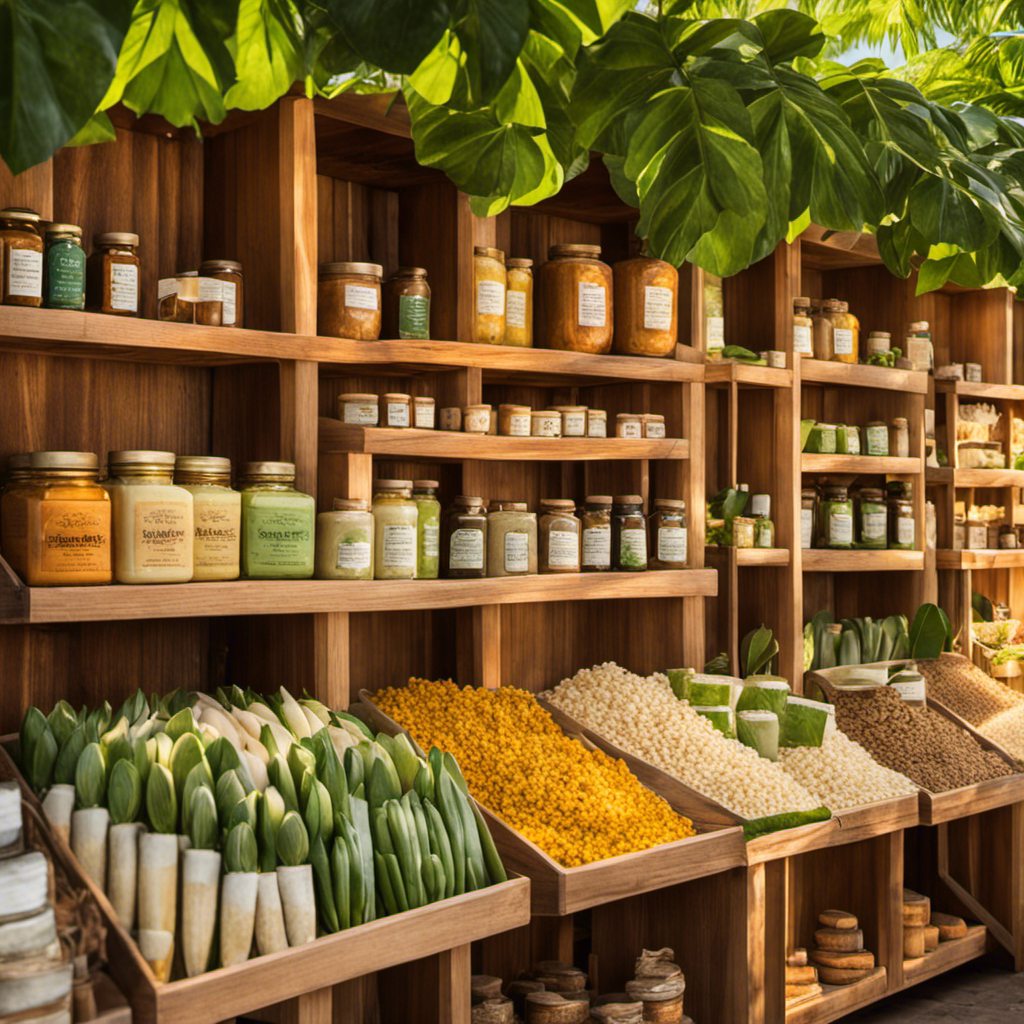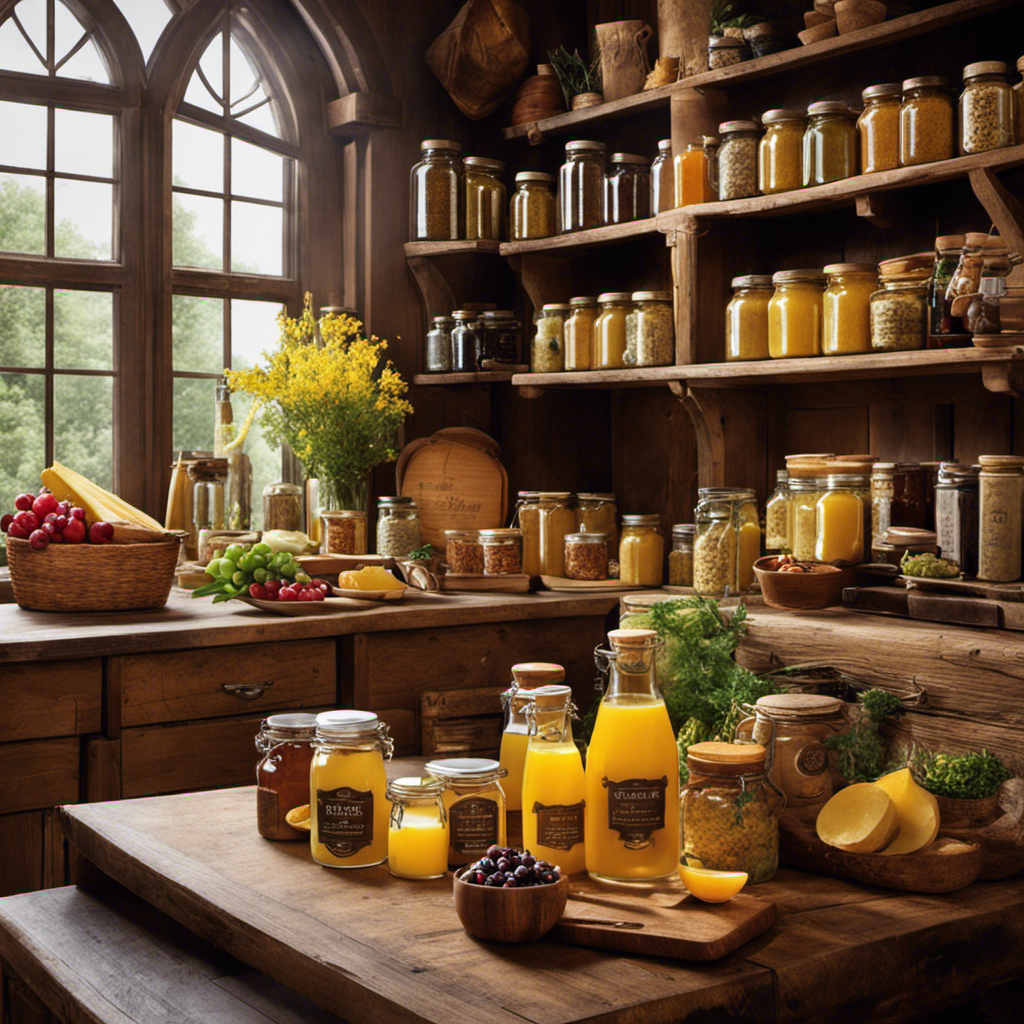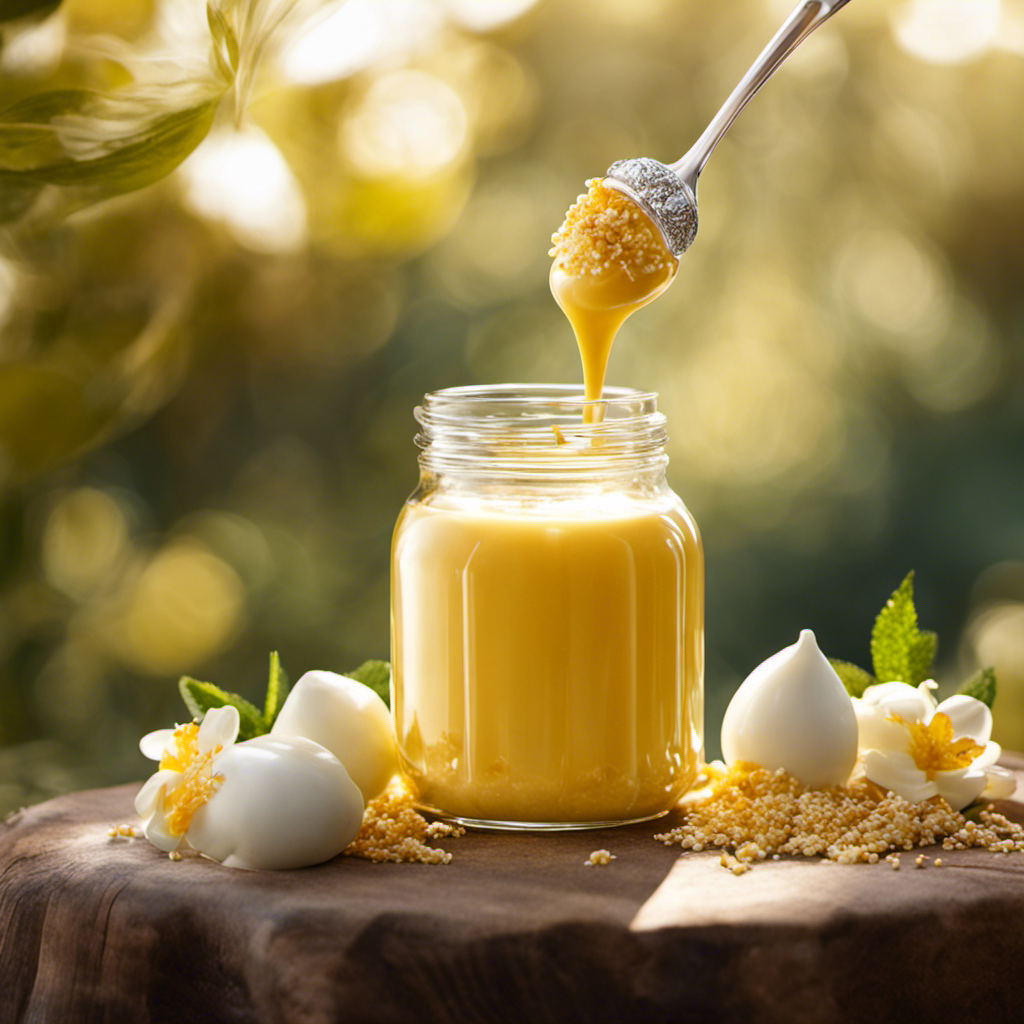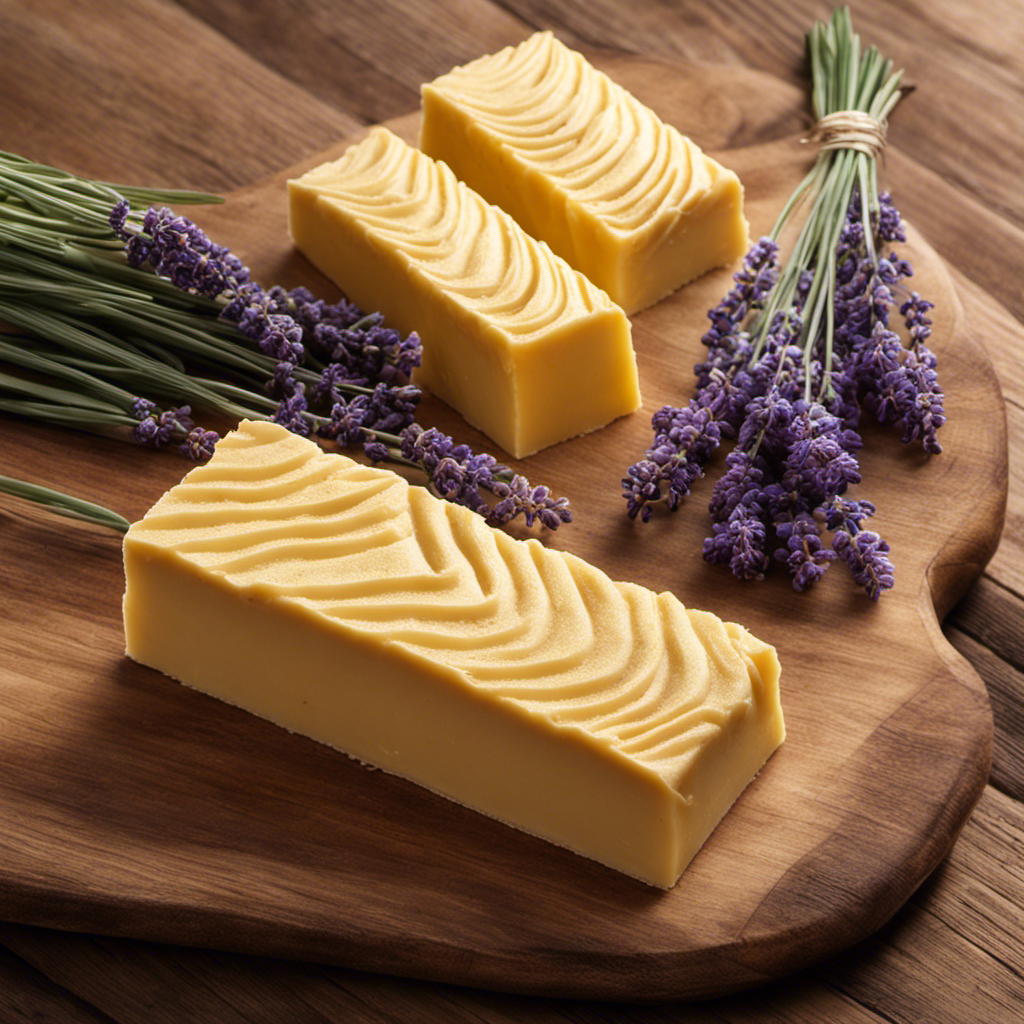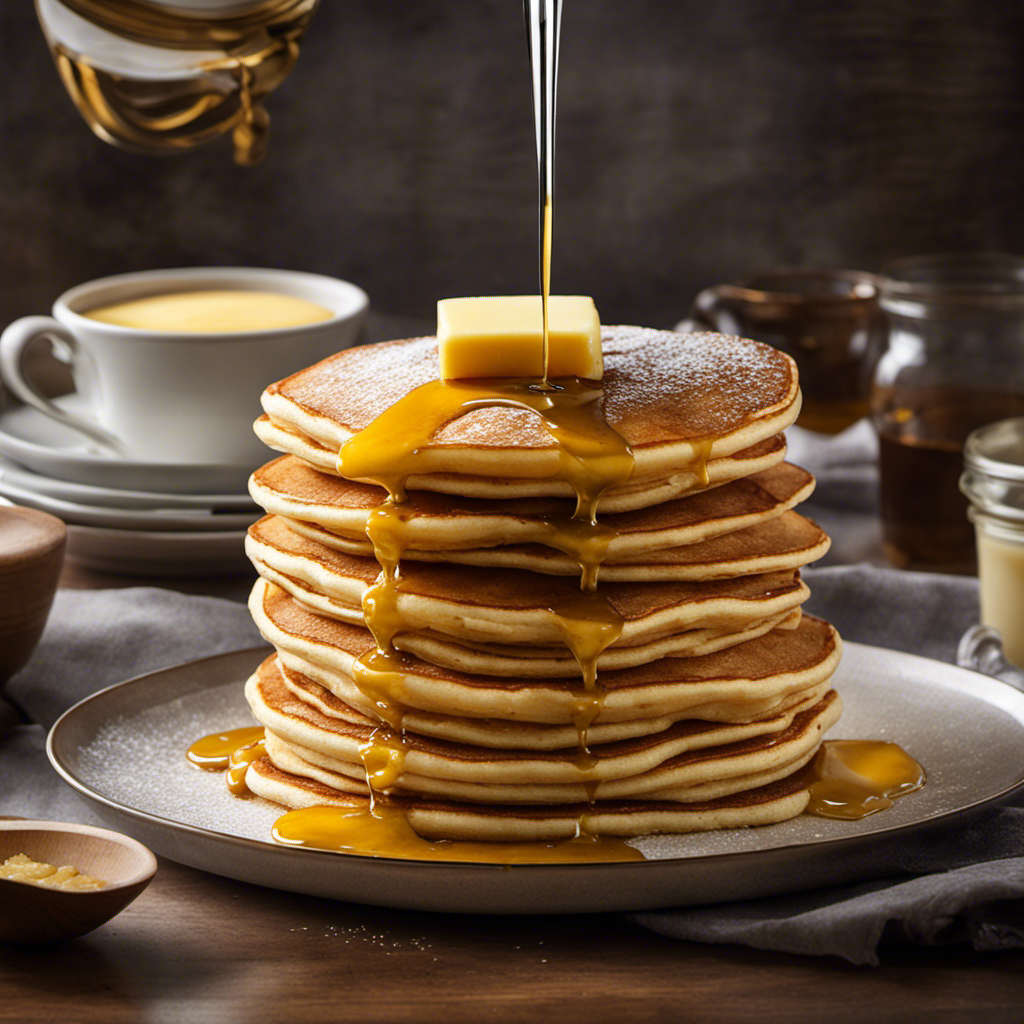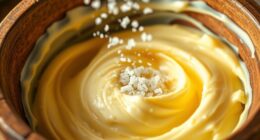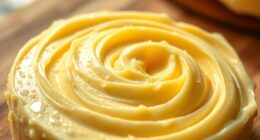Have you ever wondered, “Where can I buy shea butter?”
Well, I’m here to help you find the best places to get this amazing skincare ingredient. Whether you prefer to shop in physical stores or online, there are plenty of options available.
From health and wellness stores to specialty stores for organic products, you’ll have no trouble finding shea butter. You can even buy it directly from the producers or cooperatives.
Let’s explore all the different avenues for purchasing shea butter and get your skincare routine sorted.
Key Takeaways
- Local boutiques and health and wellness stores are good options for purchasing shea butter, as they often carry high-quality and ethically sourced products.
- Online retailers such as Amazon, Etsy, Walmart, and Shea Butter Market offer convenience and a wide variety of shea butter products.
- Farmers markets and craft fairs provide an opportunity to support local artisans and farmers while finding unique handmade products, including shea butter.
- African markets, ethnic grocery stores, and direct purchases from shea butter producers or cooperatives can ensure authentic products and fair compensation for farmers.
Physical Stores That Sell Shea Butter
You can find shea butter at many physical stores. One of the best places to look for shea butter is at local boutiques. These boutiques often carry a variety of natural and organic products, including homemade shea products. The advantage of buying shea butter from local boutiques is that you can support small businesses and also have the opportunity to speak with the shop owner or staff who can provide recommendations and answer any questions you may have.
Additionally, these boutiques often source their shea butter from local communities in Africa, ensuring that you are purchasing a high-quality and ethically produced product.
Transitioning into the next section about online retailers, while physical stores offer a personal touch, online retailers provide convenience and a wider range of options.
Online Retailers for Shea Butter
There are several online retailers where you can find shea butter for purchase. These online marketplaces provide easy access to high-quality shea butter products, allowing you to enjoy its numerous benefits from the comfort of your own home. Shea butter is a versatile skincare ingredient known for its moisturizing, nourishing, and healing properties. It is rich in vitamins A, E, and F, as well as essential fatty acids, making it a great choice for dry skin, eczema, and even hair care. Here is a list of some popular online retailers where you can buy shea butter:
| Retailer | Website |
|---|---|
| Amazon | www.amazon.com |
| Etsy | www.etsy.com |
| Walmart | www.walmart.com |
| Shea Butter Market | www.sheabuttermarket.com |
These online platforms offer a wide range of shea butter products, including raw shea butter, shea butter lotions, and shea butter-based skincare products. Take advantage of the convenience and variety offered by these online retailers and experience the incredible benefits of shea butter for yourself.
Local Farmers Markets and Craft Fairs
When searching for unique and handmade products, local farmers markets and craft fairs offer a diverse selection of items. Not only do these markets provide an opportunity to support local artisans and farmers, but they also offer a shopping experience that is unlike any other.
Farmers markets are known for their fresh produce, dairy products, and meats, but they often have a variety of other goods as well, including handmade soaps, candles, jewelry, and even shea butter.
Craft fairs, on the other hand, are a treasure trove of one-of-a-kind creations, from pottery to paintings to clothing accessories.
Exploring these markets and fairs is not only a great way to find unique products but also to connect with the local community and learn about the stories behind each item.
As I continued my search for where to buy shea butter, I also discovered that health and wellness stores often carry this natural ingredient.
Health and Wellness Stores That Carry Shea Butter
I’ve found that health and wellness stores usually stock this natural ingredient, shea butter. If you’re looking for a trustworthy source to buy shea butter, health food stores are a great option.
These stores prioritize natural and organic products, making them the perfect place to find high-quality shea butter. Many health food stores carry a wide range of skincare products, including natural skincare brands that use shea butter as a key ingredient.
Not only is shea butter known for its moisturizing properties, but it also has anti-inflammatory and antioxidant benefits. By incorporating shea butter into your skincare routine, you can nourish and hydrate your skin while promoting a healthy, youthful glow.
Beauty Supply Stores With Shea Butter Products
When it comes to finding shea butter, there are two main options to consider: online and local stores.
Online options provide convenience and a wide range of products to choose from, allowing you to compare prices and read reviews before making a purchase.
On the other hand, local stores offer the benefit of immediate availability, allowing you to physically examine the product before buying.
Ultimately, the decision between online and local store shopping will depend on your personal preferences and needs.
Online Options for Shea
You can find online options for buying shea butter from various websites and online retailers. Shea butter is a versatile ingredient that offers numerous benefits for the skin. It is rich in vitamins A, E, and F, which help to nourish and hydrate the skin, leaving it soft and supple. Shea butter also has anti-inflammatory properties that can soothe irritated skin and reduce redness.
One of the great things about buying shea butter online is the wide range of options available. You can choose from different brands, formulations, and sizes to suit your needs. Whether you prefer raw shea butter or products that already contain shea butter, there is something for everyone.
Here is a table highlighting some of the different ways you can incorporate shea butter into your skincare routine:
| Usage | Benefits |
|---|---|
| Moisturizer | Hydrates and nourishes the skin |
| Lip balm | Soothes and protects dry, chapped lips |
| Body butter | Provides intense moisture for dry skin |
| Hair conditioner | Helps to soften and detangle hair |
With so many options and benefits, it’s no wonder that shea butter has become a popular ingredient in skincare products. So why not give it a try and experience the wonders of shea butter for yourself?
Local Store Availability
When it comes to buying shea butter, online options are convenient, but sometimes you just want to see and feel the product before making a purchase. That’s where local store availability comes in. Here are some alternative options for buying shea butter:
-
Local farmers markets: Many farmers markets feature local artisans who sell homemade shea butter. This allows you to support local businesses while getting a high-quality product.
-
Health food stores: These stores often have a section dedicated to natural and organic products, including shea butter. They usually carry a variety of brands and types to choose from.
-
Beauty supply stores: Some beauty supply stores carry shea butter as part of their natural skincare section. These stores are a great option if you’re looking for a specific brand or type of shea butter.
-
Ethnic grocery stores: If you’re looking for shea butter with a cultural touch, check out ethnic grocery stores. They often have a wide range of shea butter products from different regions.
Transitioning into the next section, if you’re searching for a wider selection of organic and natural products, specialty stores are your best bet.
Specialty Stores for Organic and Natural Products
There’s a great store nearby that sells organic and natural products, including shea butter. When it comes to finding specialty store options for organic and natural products, this store is a hidden gem.
They offer a wide range of organic skincare products, and shea butter is one of their top sellers. Using organic shea butter has numerous benefits for your skin. It is rich in vitamins A and E, which moisturize and nourish the skin, leaving it soft and smooth. Shea butter also has anti-inflammatory properties that can help soothe irritated skin and reduce redness. Additionally, it can provide relief from dryness, eczema, and other skin conditions.
So, if you’re looking for high-quality organic shea butter, this store is definitely worth checking out.
Now, let’s explore the availability of shea butter in African markets and ethnic grocery stores.
African Markets and Ethnic Grocery Stores
African markets and ethnic grocery stores often carry a variety of unique and authentic products. These establishments are a hidden treasure trove for those seeking to explore diverse cuisines and find specialty items from different regions of Africa.
Here are four reasons why you should visit African markets and ethnic grocery stores:
-
Authenticity: These markets are known for offering genuine products that are true to their African origins. From spices and herbs to traditional ingredients and snacks, you can find items that are difficult to find elsewhere.
-
Cultural Experience: Shopping at African markets and ethnic grocery stores allows you to immerse yourself in the vibrant and rich African culture. You can interact with the store owners and learn about the significance of various products in African cuisine and traditions.
-
Variety: These markets offer a wide range of products, including fresh produce, meats, grains, and dairy products. You can also find unique African ingredients, such as shea butter, that are valued for their health benefits and beauty applications.
-
Supporting Local Businesses: By shopping at African markets and ethnic grocery stores, you are directly supporting local businesses and communities. Your patronage helps sustain these establishments and contributes to the preservation of African culinary traditions.
Directly From Shea Butter Producers or Cooperatives
When it comes to purchasing shea butter, one of the best options is to buy directly from the producers or cooperatives. This allows you to support the local communities where shea butter is produced and ensures that the farmers receive fair compensation for their hard work.
By engaging in direct sales, you can also establish a personal connection with the producers and gain a deeper understanding of the shea butter production process. Additionally, buying directly from the source often means that you are getting a high-quality, authentic product.
Many of these producers and cooperatives also offer fair trade options, which means that the shea butter is produced in an ethical and sustainable manner. Not only are you benefiting from the nourishing properties of shea butter, but you are also making a positive impact on the lives of the producers and their communities.
Alternative Options for Buying Shea Butter
If you’re looking for alternative options, you might consider exploring online retailers or local health stores for a wide selection of natural skincare products. Here are four options to consider:
-
Alternative Brands: Many alternative brands offer shea butter products that are ethically sourced and cruelty-free. Look for brands that prioritize sustainability and fair trade practices.
-
Homemade Options: Making your own shea butter products can be a fun and rewarding experience. There are plenty of recipes available online that allow you to customize your skincare products to suit your specific needs.
-
Farmer’s Markets: Check out your local farmer’s market for vendors who sell handmade shea butter products. This way, you can support local artisans and ensure the quality of the products you purchase.
-
Social Media and Online Communities: Joining online communities or following social media accounts dedicated to natural skincare can help you discover small businesses and independent sellers who offer high-quality shea butter products.
Frequently Asked Questions
How Long Does Shea Butter Last Before It Expires?
Shea butter typically lasts for about two years before it expires. It is important to store it properly to maintain its quality and benefits. Keep it in a cool, dry place to prevent it from going bad.
Are There Any Side Effects or Allergies Associated With Using Shea Butter?
Using shea butter can have side effects and may cause allergic reactions. It’s important to do a patch test before using it on your skin. Consult a dermatologist for personalized advice.
Can Shea Butter Be Used on All Skin Types?
Shea butter is a versatile skincare ingredient that suits all skin types. I’ve personally witnessed its benefits on my dry and sensitive skin. To find the best shea butter brands, do thorough research online or ask for recommendations from trusted sources.
Can Shea Butter Be Used for Hair Care as Well?
Shea butter can be used for hair care as well. It promotes hair growth and has numerous benefits for the hair. It’s a natural and effective solution for nourishing and moisturizing the hair.
Is Shea Butter Cruelty-Free and Vegan?
Yes, shea butter is cruelty-free and vegan. It is derived from the nuts of the shea tree and does not involve any harm to animals. The production process preserves its natural benefits for the skin.
Conclusion
So there you have it, folks! Now you know exactly where to find that luxurious shea butter you’ve been searching for.
Whether you prefer the convenience of online shopping or the charm of browsing through physical stores, there are plenty of options available.
From health and wellness stores to specialty shops, farmers markets to African markets, the possibilities are endless.
Don’t wait any longer – go out there and get your hands on some shea butter today. You won’t be disappointed!
